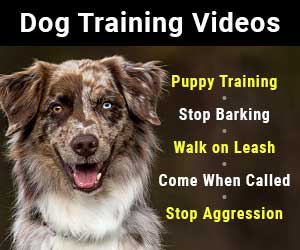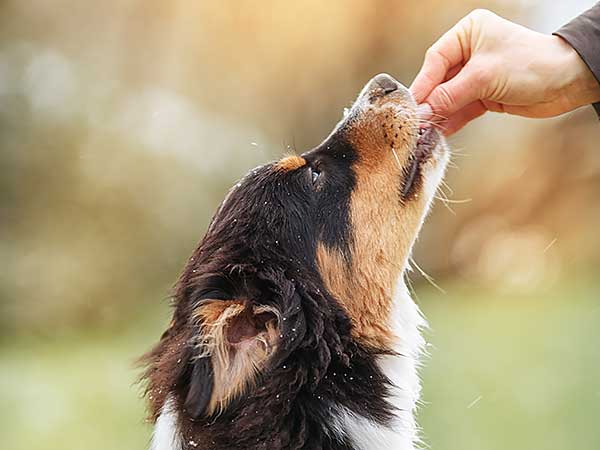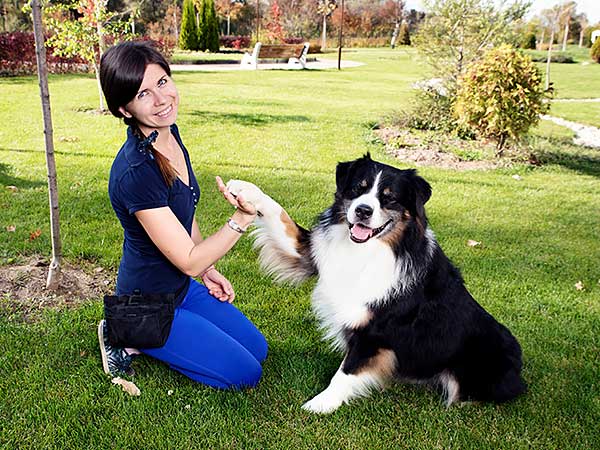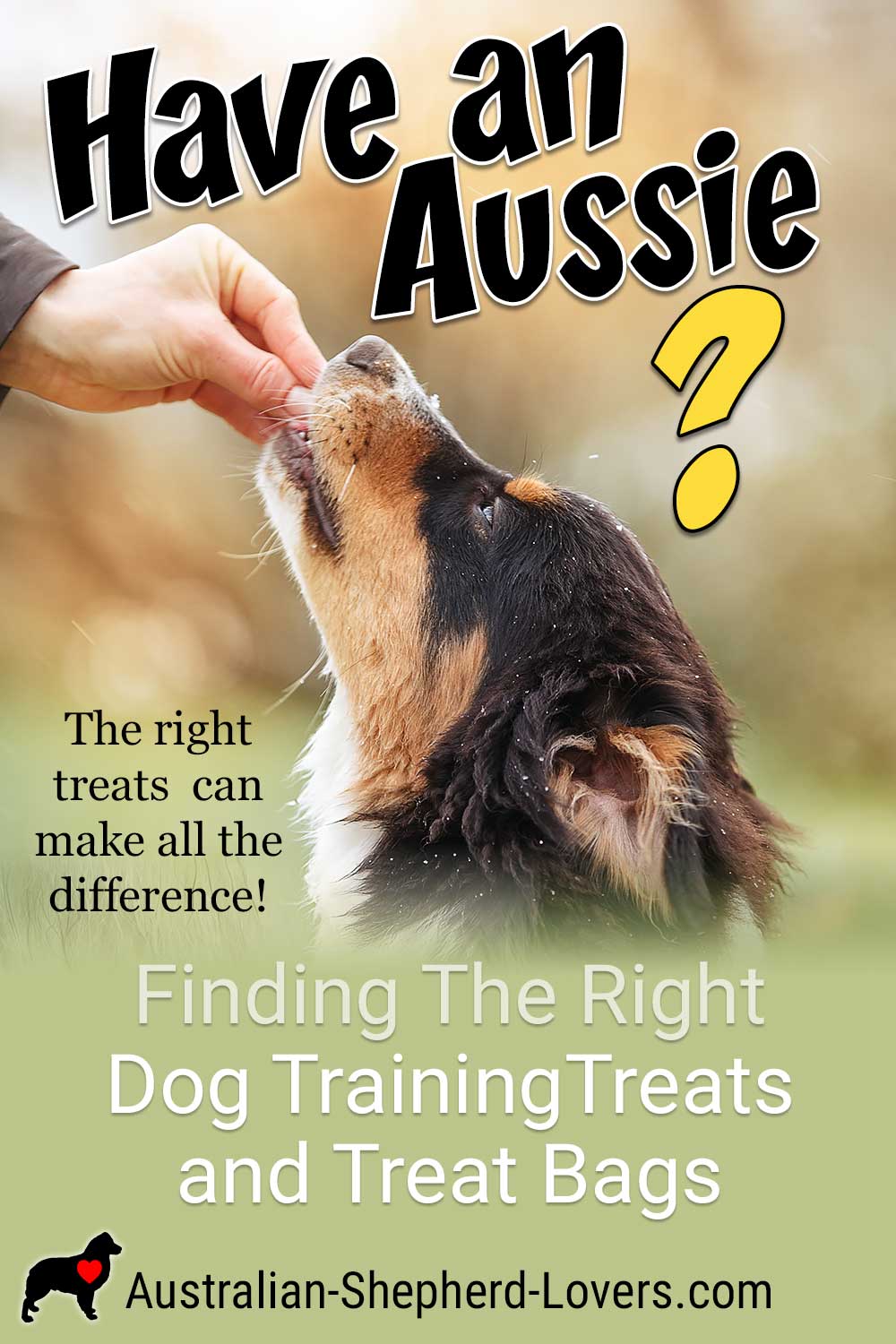
Dog Training Treats: Finding The Right Treats and Treat Bags
Choosing dog training treats can make all the difference in your dog's learning process. Whether you're doing simple obedience training or teaching your dog specific skills or tricks, treats can help to maintain focus and avoid distractions to make learning easier. Even breeds that tend to learn easily, like the Australian Shepherd, can benefit from this approach so never underestimate the importance of a good treat.
Treats are used to reinforce the behaviors that you want and reward your dog for performing them. Because you need to focus your dog on the task at hand and ensure that he will learn, you need to provide a treat that will act as the proper motivation. At the same time, you don't want him to have too much of a good thing, so you need to use them properly.
The ideal puppy training treats should be small in size so your dog can eat them quickly and then move on to the next training task, moist or semi-moist as crunchier treats are generally less enticing, and smell strongly to engage the dog's heightened sense of smell.
Many Different Types of Dog Training Treats Available
Healthy And Nutritional Low Calorie Treat, Made In The USA. Available on Amazon (great reviews and ratings).
There are many different types available and ideally you'll want to select something that is particularly appealing to your dog. Of course, these are just general criteria for treats. Every dog has its own personal taste, so you want something in your dog training treat bag that will work best for your pup.
Trainers tend to classify dog training treats as "high value", "medium value" and "low value". Those criteria don't refer to price but rather the value your dog places on each kind of treat. "High value" treats are the ones that he will be most eager to eat, while "low value" will have the least attraction for him.
High value puppy training treats are usually moist or freeze-dried, extra smelly and something that your dog doesn't get to eat very often, like a small piece of chicken, liverwurst, or peanut butter. Since a dog is most likely to respond to these treats, they should be used in specific situations including first introducing a new behavior, working on training in highly distracting surroundings, or during important socialization training for puppies. Again, nutrition is important so avoid using foods like bacon or sausage too much, which are high in fat.
Medium value dog training treats are semi-moist or dry and contain ingredients that your dog doesn't get in his regular food. Medium treats should be given more frequently during training than high value treats and are particularly useful when the dog is maintaining an already learned behavior, in a mildly distracting environment or throughout the day for good behavior.
Low value treats for dogs are usually dry and crunchy and can include individual pieces of his everyday kibble. Since they are lower in calories than high or medium value treats, they are great to have in your dog training treat bag for times when your dog performs a learned behavior but not up to the best standards, in low or no distraction environments and throughout the day to encourage good behavior.
Fazing Out High and Medium Value Dog Training Treats
The overall goal in training is to limit the use of high or medium value treats and eventually faze them out altogether and incorporating low value treats can help to achieve this. Remember, it's not about having your dog eating continuously but rather using something special as a reward for performing the desired behavior.
You can determine which dog training treats your pup prefers by holding one type in one closed fist and another in the other and seeing which scent he's drawn to. Once you know what gets his attention most you'll be able to begin stocking your treat bag and getting to work.
Choosing a Dog Training Treat Bag
Since training is an ongoing process, you'll need to have treats on hand at all times to reward your dog or to get his focus in particular situations. That means carrying them with you on walks, at the park or working in the field with your Australian Shepherd. Since puppy training treats can be moist and smelly, you can't just tuck them in your pocket. You'll need a bag to carry them in that can contain them yet allow for easy access so you're ready to give a quick reward.
There are many styles of dog training treat bag on the market, in everything from nylon and mesh to silicone. The important features to look for are something that is roomy, has a clip to attach to a pocket or a strap that fits around your waist, and has an easy form of closure so that you can get your hand in and out quickly.
Some bags include extra exterior pockets to hold other supplies, including poop bags, toys, and even your phone. Closures can either be drawstring or magnetic, as long as they open and close easily. Of course the important part is storing those puppy training treats and you'll want plenty of room inside for them and, if possible, a second interior pocket so you can keep different types of treats separate.
Training can be a wonderful way for you and your Aussie to form a strong bond. Having the right type of dog training treats can help you both get off on the right foot and ensure that training goes smoothly. So before you start off on your training journey, take the time to investigate the options and find something that will make learning fun for both of you.
Have Dog Training Questions?
Check out these introductory dog training videos...
I want my dog to stop being aggressive.
I want some help training my new puppy.
I want my dog to stop barking at everything.
Get Australian Shepherd Info, Website Updates, Special Offers, and Cartoons...
FREE GIFT
You'll also receive a free copy of the ebook
My Everyday Dog Training Tools
by professional dog trainer Daniel Abdelnoor, "Doggy Dan"

















 Loading Image...
Loading Image...